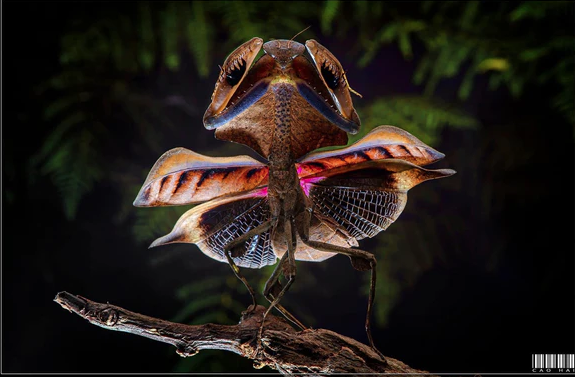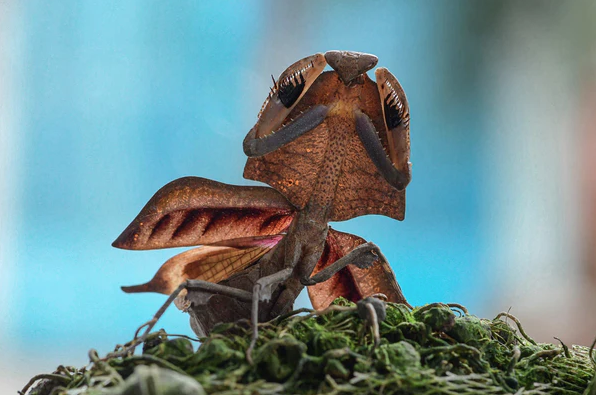Deroplatys gorochovi
Vietnam Dead Leaf (L3+)
Species Info:
Origin
Lifestyle
Temp
Humidity
Leg Span
Disposition
Suitability
A true expert in camouflage, the Vietnam Giant Dead Leaf Mantis (Deroplatys gorochovi) is renowned for its striking resemblance to a curled, dried leaf.
Originating from Southeast Asia, this large mantis sports a broad, earthy brown body with textured features that allow it to blend seamlessly into leaf litter. As they mature, their appearance becomes even more dramatic, with an impressive “leafy” threat display and a notably wide pronotum.
This species is well-suited to intermediate keepers and does best in warm, humid enclosures with plenty of vertical surfaces, gentle airflow, and softer lighting. Like most mantises, they are best housed alone due to their cannibalistic tendencies.
Keep the Praying Mantis in a tall container; a plastic sweet jar is ideal. There is sufficient air in the container, but provide some ventilation to prevent stale air. Provide twigs, which are almost the height of the jar for the mantis to climb up on; this is essential for it to be able to moult successfully.
Temperature: The ideal range is 18° – 30°C.( The lower the temp. the slower the growth rate.) with a regular fine water spray in the cage, without making the cage wet as mould is a potential insect killer.
Food: Feed on live foods e.g. flies, maggots, crickets, locusts, and grasshoppers. etc. in fact they will eat just about anything they can grab, but as a rule try feed things that are less than half the size of the Mantis.
Breeding: Introduce the male to the female in a large cage, or aquarium after feeding her all she can eat (no easy task!). Mating (pairing) may last some hours and only occasionally results in the male being eaten. The female should lay an egg mass (ootheca) 2 – 4 weeks after mating which will be attached to a twig or stick. This can produce between 10 – 300 young, depending on the species and will hatch about 4 – 6 weeks after being laid. Young Mantis should be fed on fruit flies, green /black flies or again anything they can grab, micro crickets suit quite a few species shortly after hatching.

